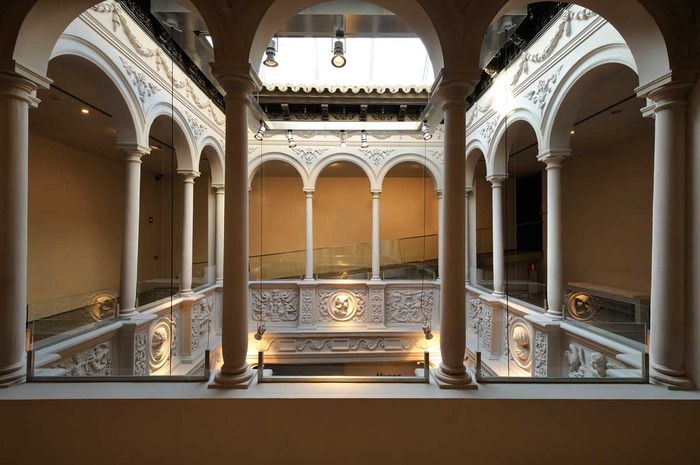House of Infanzón Jerónimo Cósida

Technical details
Description
The house belonged to the low-ranking nobleman Jerónimo de Cosida and his wife Violante de Albión, representatives of two families of certain status in Zaragoza. Its construction began in 1535 and continued throughout the year under the Morisco master builder, Juan Lanuza. The building provides a good example of the progress of Renaissance influences on housing in Zaragoza at that time.
The inner courtyard has a square shape and features four columns with banding on the upper part, crowned with beautiful Corinthian capitals. The upper gallery, with simple Tuscan columns and rounded arches, retains its decoration of grotesques and plaster medallions on the parapets. These frame images of ancient design that contain an allegorical message alluding to the family's lineage. In this case, this lineage was blessed by a favourable birth (represented by Atia Balba Caesonia, mother of Emperor Augustus), in contrast with another lineage which was banefully marked by an unfavourable birth (represented by the mother of Marcus Agrippa).
The key to this interpretation is found in the brooch worn on the dress of the woman in the medallion on the parapet of the north side of the courtyard: a child with his feet first. This detail characterises this figure as the mother of Agrippa: a name given to someone born feet first; a breech birth was considered unnatural, and one that would bring the child and its descendants a life of torment.
The other female figure is seen in the image on the south side of the courtyard. The ornaments she wears are the key to identifying her son, who is on the west side. She wears an angel-like figure as a brooch, most likely Cupid. Her hair is adorned with a medallion showing a rampant lion, the symbol of Zaragoza since the Middle Ages. This medallion is a reference to the founder of the ancient Caesar Augusta, the Emperor Augustus. The male figure in the medallion on the west side of the courtyard is therefore Augustus.


